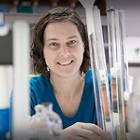Nitrogen Cycling in Permafrost Soils
A special issue of Nitrogen (ISSN 2504-3129).
Deadline for manuscript submissions: 31 May 2024 | Viewed by 15069
Special Issue Editors
Interests: ecosystem ecology; ecohydrology; biogeochemistry; evolutionary biology; anthropocene
Interests: arctic soils; permafrost; carbon and nitrogen cycling; greenhouse gases; stable isotopes; soil microbes; soil ecology; wetlands
Special Issue Information
Dear Colleagues,
Climate change is causing the most profound changes in northern latitudes, where the temperature increase has been predicted to be largest. Warming and permafrost thawing in the Arctic, Antarctic, and alpine regions is one of the potential tipping points for climate breakdown because it increases the risk of releasing the vast carbon and nitrogen reserves stored in the permafrost soils in the form of the greenhouse gases. While carbon dynamics in permafrost regions have been widely studied, much less attention has been paid to the fact that the Arctic also holds significant amounts of nitrogen in its soils. Moreover, the fate of this N is largely unknown. Since nitrogen regulates key components of the carbon cycle and mineral N forms are the substrate for the strong greenhouse gas nitrous oxide, the study of the N cycle and pools in Arctic ecosystem should be a key research priority.
This Special Issue aims to advance our current understanding of nitrogen cycling and carbon–nitrogen interactions in permafrost soils. The Special Issue will include original articles, case studies, and critical review papers covering the following topics:
- Nitrogen pools and fractions in permafrost soils;
- Mineralization, nitrification and denitrification rates in permafrost soils;
- Microbes and soil fauna involved in nitrogen cycling processes of permafrost soils;
- Inputs of nitrogen (e.g., deposition, N load from animals, fertilization, N2 fixation) into permafrost soils;
- Nitrogen uptake by Arctic, Antarctic, and alpine plants and interactions of carbon and nitrogen on primary productivity;
- Nitrogen loss pathways to the atmosphere and aquatic ecosystems (e.g., N leaching, fire, gaseous losses);
- Novel modelling and experimental approaches to investigate nitrogen cycling in permafrost soils;
- Future predictions on permafrost nitrogen climate feedbacks.
It is our pleasure to invite you to submit a manuscript to this Special Issue.
Prof. Dr. Benjamin Abbott
Dr. Christina Biasi
Prof. Dr. Pertti Martikainen
Guest Editors
Manuscript Submission Information
Manuscripts should be submitted online at www.mdpi.com by registering and logging in to this website. Once you are registered, click here to go to the submission form. Manuscripts can be submitted until the deadline. All submissions that pass pre-check are peer-reviewed. Accepted papers will be published continuously in the journal (as soon as accepted) and will be listed together on the special issue website. Research articles, review articles as well as short communications are invited. For planned papers, a title and short abstract (about 100 words) can be sent to the Editorial Office for announcement on this website.
Submitted manuscripts should not have been published previously, nor be under consideration for publication elsewhere (except conference proceedings papers). All manuscripts are thoroughly refereed through a single-blind peer-review process. A guide for authors and other relevant information for submission of manuscripts is available on the Instructions for Authors page. Nitrogen is an international peer-reviewed open access quarterly journal published by MDPI.
Please visit the Instructions for Authors page before submitting a manuscript. The Article Processing Charge (APC) for publication in this open access journal is 1000 CHF (Swiss Francs). Submitted papers should be well formatted and use good English. Authors may use MDPI's English editing service prior to publication or during author revisions.
Keywords
- nitrogen
- nitrogen cycling
- permafrost soils
- nitrous oxide
- nitrogen leaching
- nitrogen uptake by plants
- nitrogen fixation
- C/N interactions
- climate feedbacks
- microbial communities







